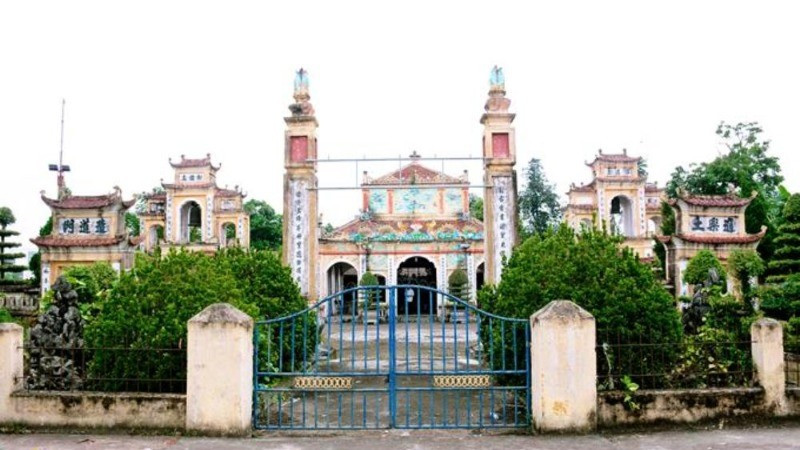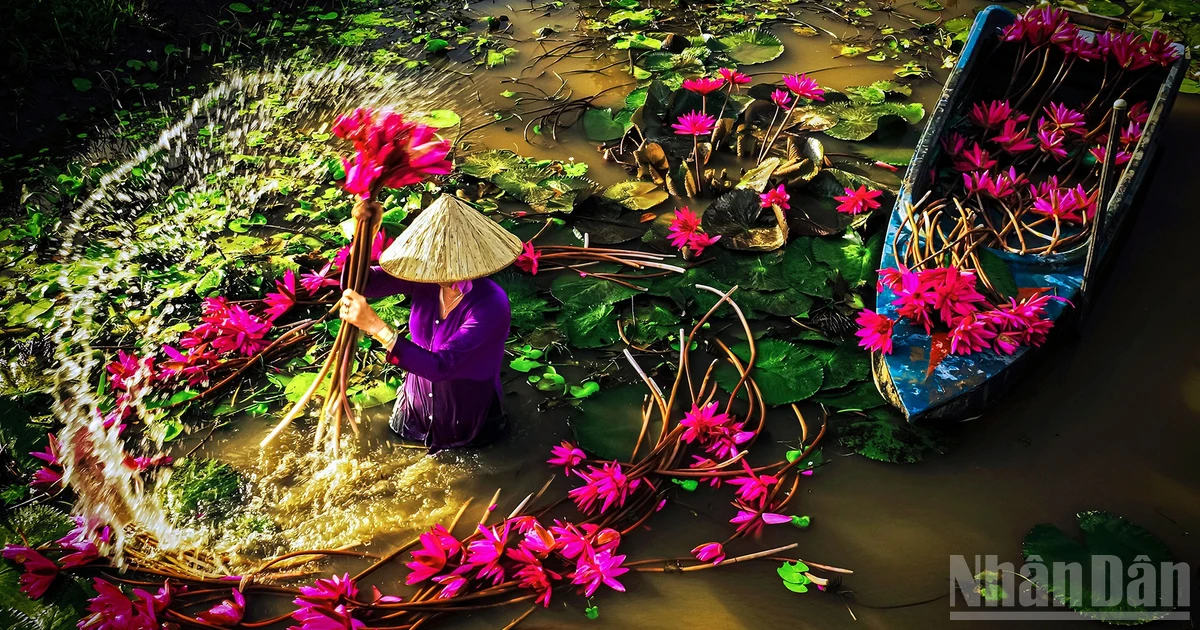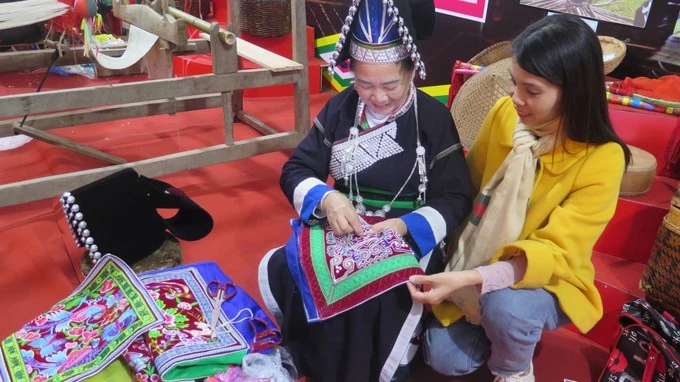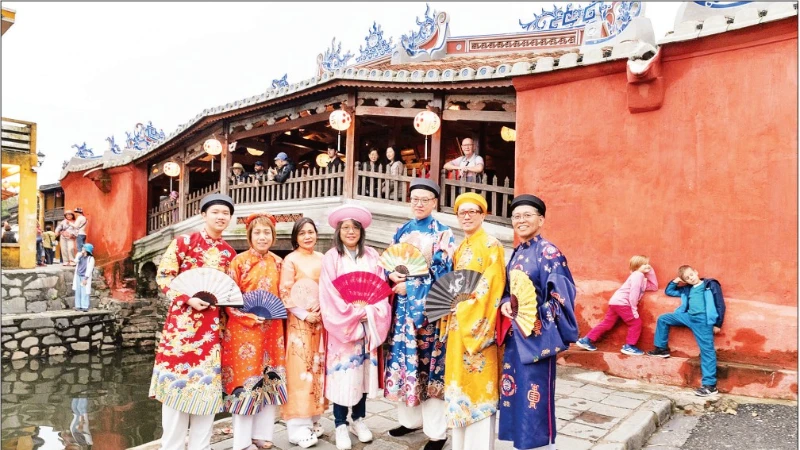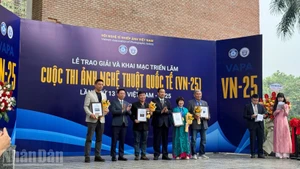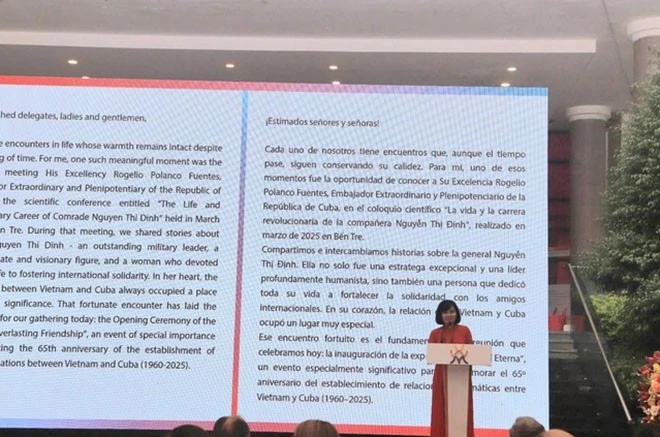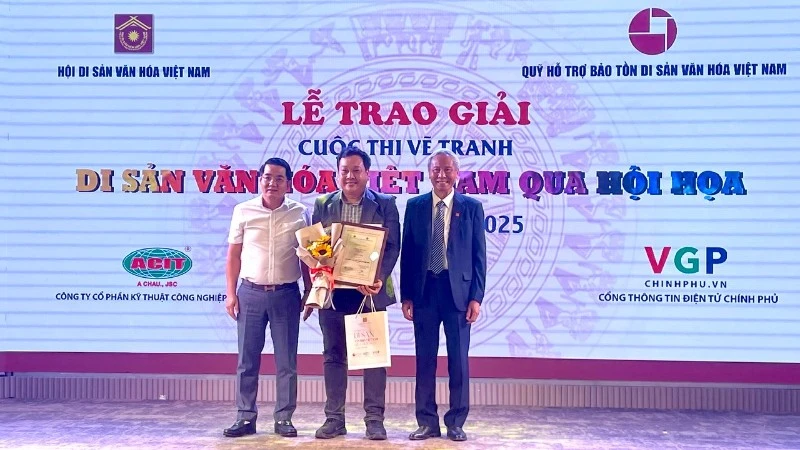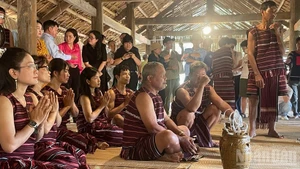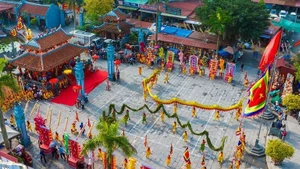Xam Temple is situated in Lac Dao Hamlet, Hong Quang Commune, approximately 10 kilometres from Nam Dinh City. The temple honours a prominent figure who played a crucial role in assisting Dinh Bo Linh in quelling the rebellion of the 12 warlords and unifying the country.
Xam Temple stands as a testament to the creativity and craftsmanship of the Vietnamese people. It bears the historical imprint of successive feudal dynasties from the 16th century to the 19th century.
A standout feature of the site’s sculptural art is found in the window panels of the front hall. These showcase traditional motifs such as dragons and phoenixes, interwoven with decorative elements, forming complete reliefs of high artistic value.
Following the front hall is the central hall and the main sanctuary, comprising three bays. These features are structural techniques, representative of 17th-century artistic styles.
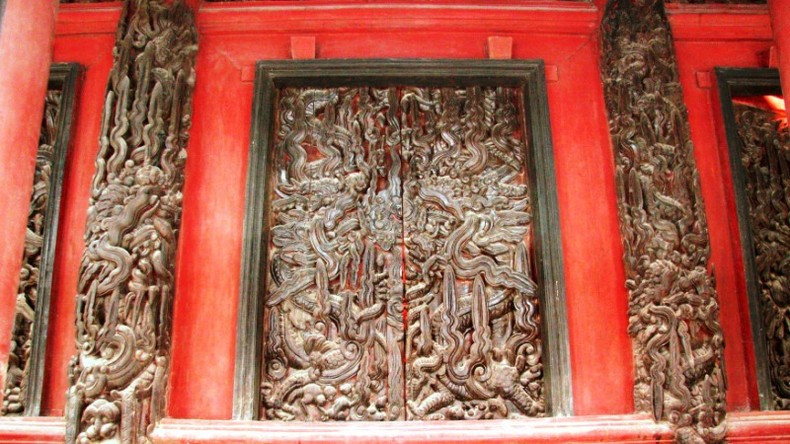 |
| The doors of the front hall of Xam Temple are intricately carved. |
Experts note that the pierced carvings at the temple show characteristics of the art style on wooden architecture in the late 16th century, these are the few remaining carvings of wood carving art of the Mac Dynasty.
Additionally, the architecture of the mid-17th century is prominently preserved in the front and rear halls. The dragon and beast carvings on doors and columns are typical of 17th-century craftsmanship, emblematic of Nam Dinh's traditional wooden architecture.
In addition to its architectural value, Den Xam hosts a traditional festival each year from the 17th to the 19th of the eighth lunar month to commemorate General Tran Lam’s legacy. The event attracts large crowds of locals and visitors with vibrant performances, traditional boat races, and folk singing and dancing.
According to residents, traditional performances on the temple grounds date back hundreds of years, deeply rooted in rural cultural life. Over the past years, the community has preserved ten folk songs and ten traditional ca tru (ceremonial song) pieces in modes.
In addition, the singing contests at Xam Temple feature performances of traditional songs such as cheo, hat van, hat cau van, and ca tru by both professional troupes and amateur artists from within and outside the province, attracting large and enthusiastic audiences.
Comrade Tran Le Doai, Vice Chairman of the Nam Dinh Provincial People’s Committee, stated that the Prime Minister’s Decision 152/QD-TTg dated January 17, 2025, recognising Xam Temple as a Special National Heritage Site, brings great pride and honour to the province. It is a well-deserved acknowledgement of the community’s long-standing efforts to preserve and promote the site’s distinctive historical, cultural, scientific, and artistic value.
He also noted that Nam Dinh has actively implemented programmes, projects, and plans to enhance the management, preservation, and promotion of tangible and intangible cultural heritages. Party committees, government agencies, and mass organisations across the province have prioritised building local cultural identity and human capital, making heritage protection a pillar of socio-economic development.
According to Comrade Luu Quang Tuyen, Secretary of Nam Truc District Party Committee, the local government and community will continue managing and safeguarding Den Xam following the Law on Cultural Heritage and the province’s regulations on decentralised heritage management. Restoration and conservation work will strictly follow legal protocols.
Moreover, the community is committed to establishing clear rules and mechanisms for preserving and promoting the site’s value, creating favourable conditions for public visits, education, and research. The aim is for Xam Temple to serve as a centre for patriotic education, national unity, and pride, fostering the aspirations of future generations to build a prosperous, civilised Viet Nam.
